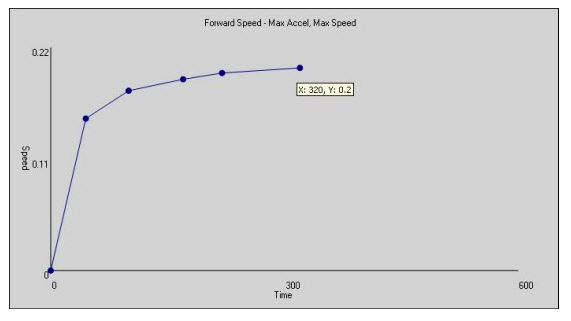5.10. Special Kinds of Acceleration#
Now we can categorize acceleration into three separate categories.
5.10.1. Zero Acceleration#
No acceleration indicates that an object maintains a constant velocity.
5.10.2. Positive and Negative Acceleration#
Positive and Negative accelerations mean very different things here and we’ll illustrate this with a simple pair of examples. When you leave the city limits, your speed goes from 35 mph to 55 mph, so the numerator in the definition of acceleration in
and this would be a positive acceleration (when you divide by the time it takes), or just “accelerating.”
But when you come into town from the highway, your speed goes from 55 mph to 35 mph and the numerator in the acceleration equation $\(\Delta v = 35 -50 = -20 \text{ mph}\)$ would be a negative acceleration, which is called a deceleration. So acceleration is negative or positive by virtue of whether the object is slowing down or speeding up.
Let’s look at a deceleration, plus we’ll include an initial velocity. On the water.
Please study Example 3:
This example shows that it’s hard to stop an aircraft carrier and that the acceleration to do so will be negative. That makes sense, right? It would be negative, since it’s decelerating. It’s a tiny deceleration because it takes so long for it to stop (which is in turn because an aircraft carrier is a really heavy thing!).
5.10.3. Varying Acceleration#
When you accelerate in your car, you probably press on the accelerator pedal more and more. If you held it constant and ignored wind resistance, you’d accelerate at a constant rate. But if you press harder and harder, you’re varying the acceleration…a non-constant acceleration. This is a more complex problem mathematically, so we’ll not go there. But it’s a very common occurrence.
Cars are not the only place where we encounter non-constant accelerated motion. How about running? A sprinter comes out of the blocks with a very high change of speed, and so a very high acceleration. As she gets into her stride and become more erect, her effort must fight against wind resistance and besides, her internal quick expenditure of energy would be hard to maintain, so there’s a reduction of acceleration. Note this doesn’t mean a reduction in velocity, just that the velocity increases at a slower rate as the race goes on. Nor does it mean a deceleration, rather she’s still going faster, just at a lesser rate than before.
